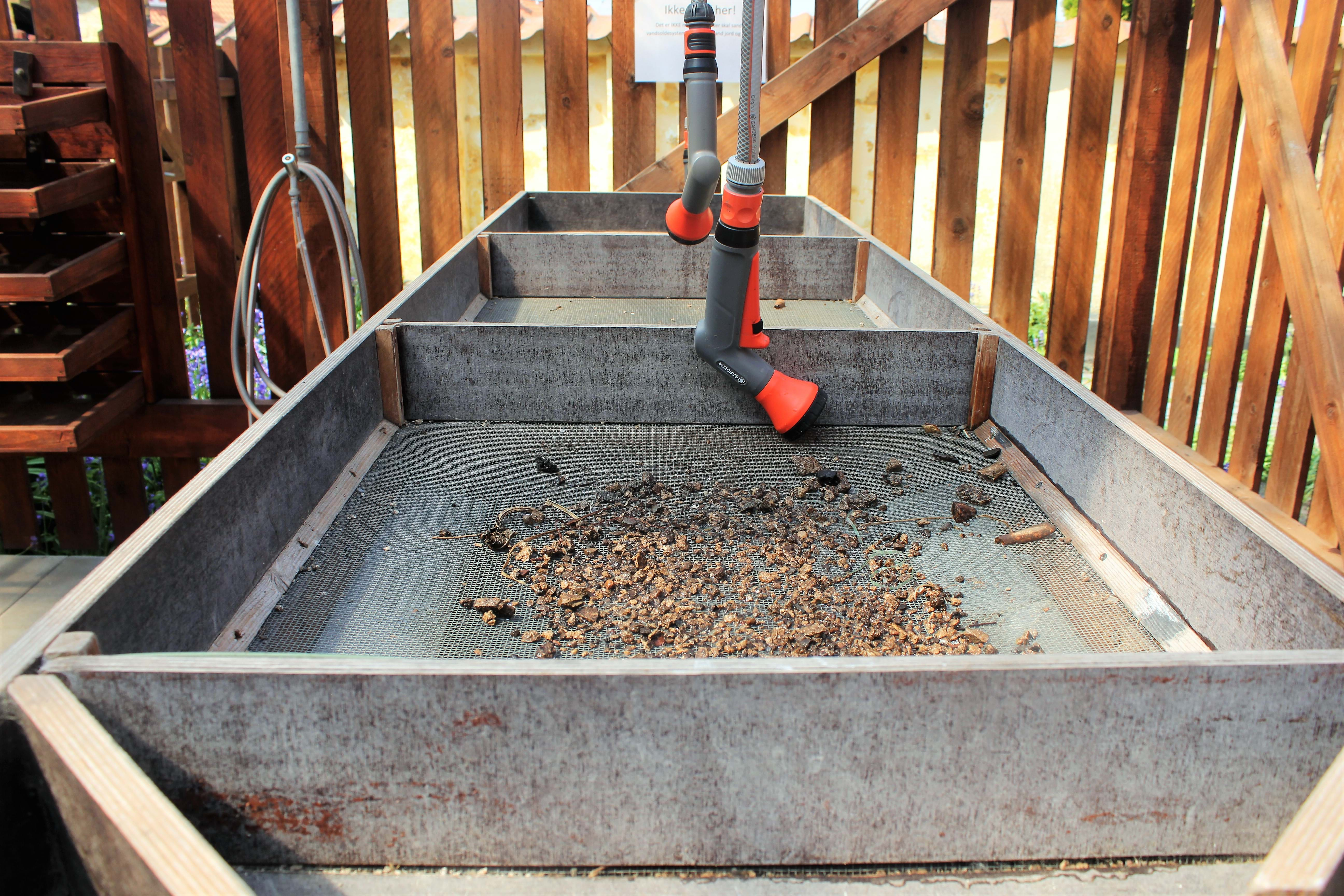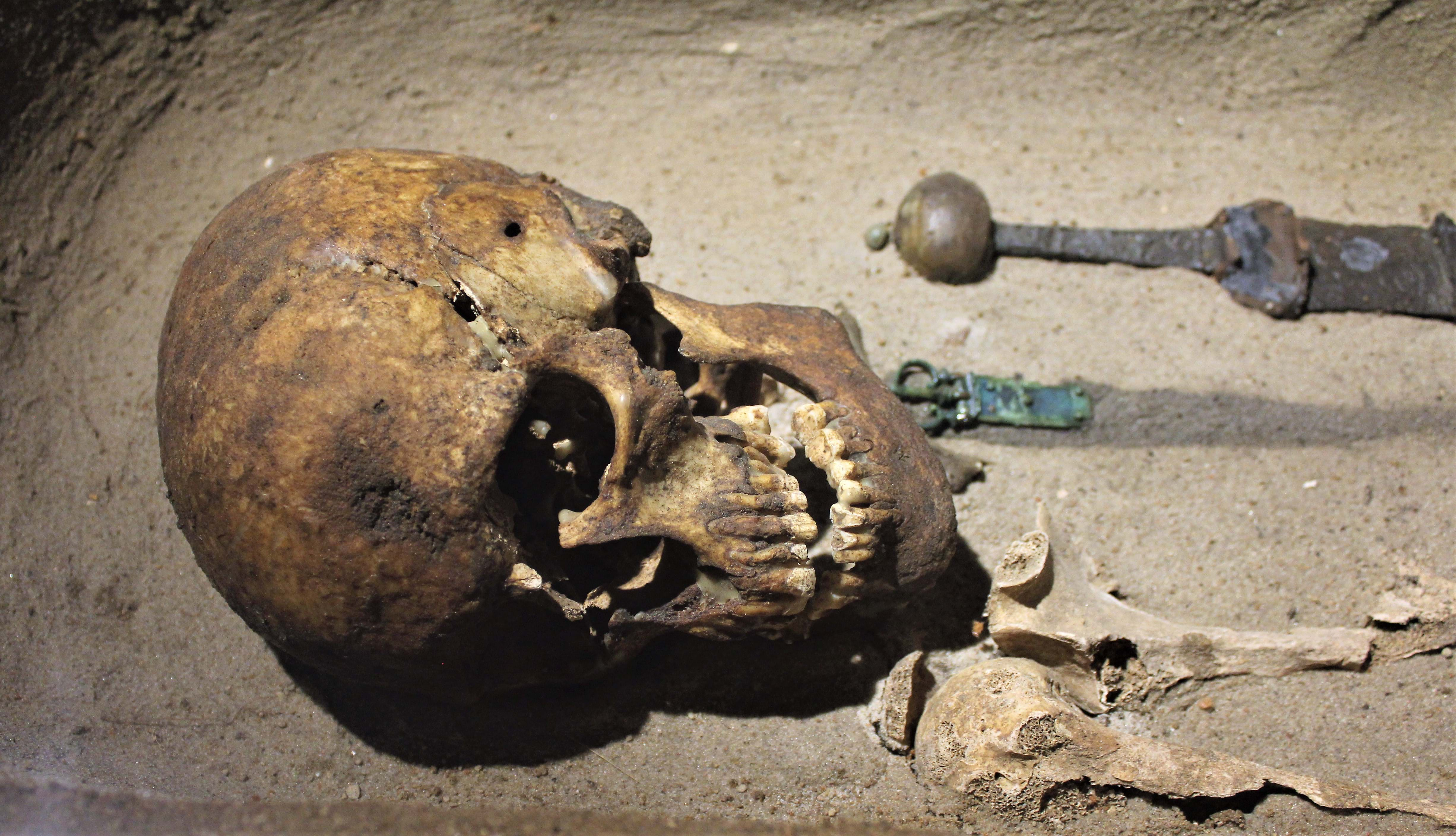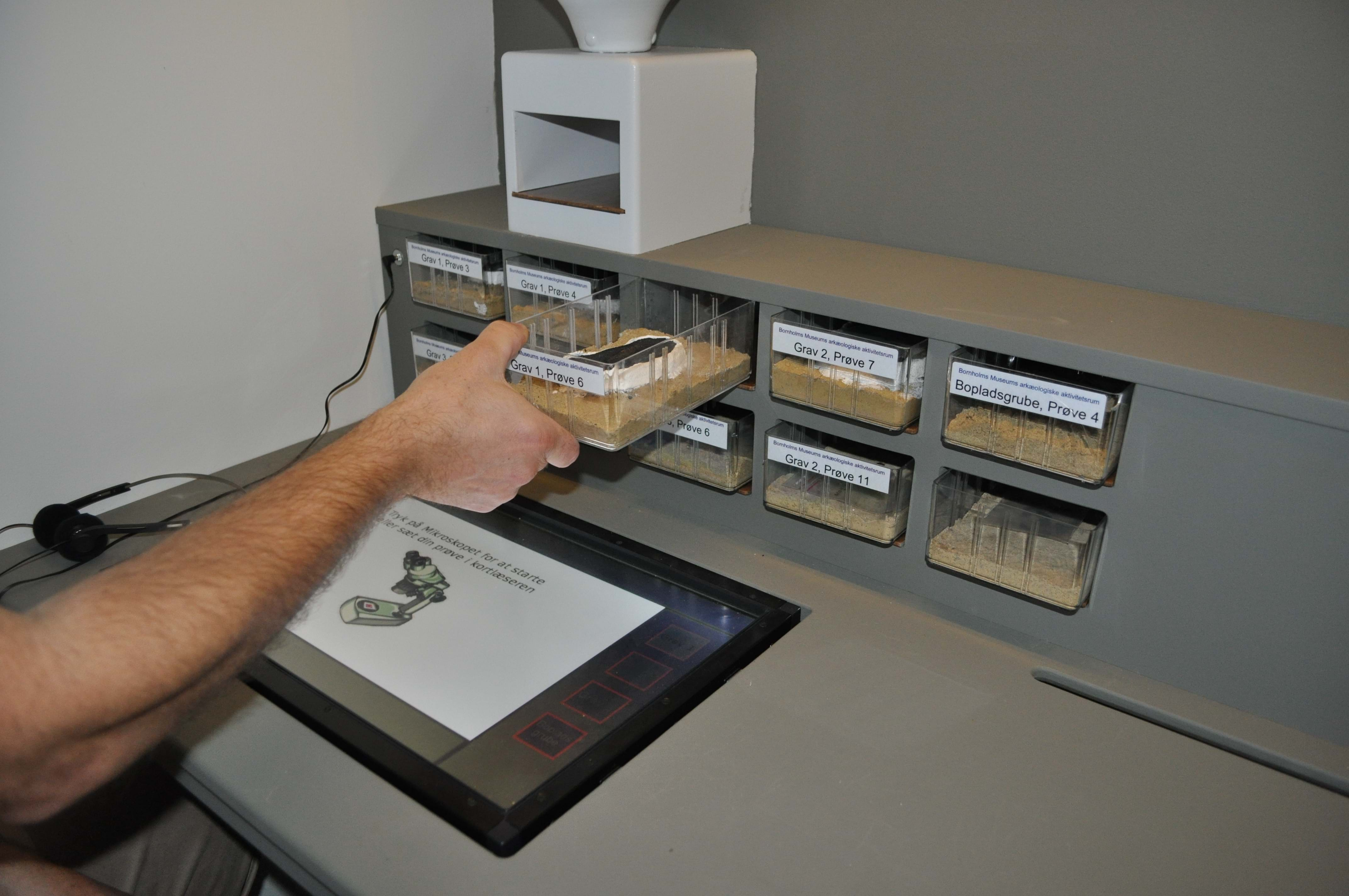GULLGUBBER AND BORNHOLM ARCHAEOLOGY
BORNHOLM'S GREATEST ARCHAEOLOGICAL DISCOVERY
The word 'gullgubbe' is an old Swedish term for a tiny piece of carved gold-foil figure. The figures display men, women and animals. Although it has not been possible to find their exact purpose, arhcaeologists reckon that the gullgubber have been used as offerings in the tempels.
Most of the gullgubber have imprinted figures while others are cut out and scratced into the foil. The latter ones are all unique and more rare. The figures show signs of wealth e.g. beautiful clothing, pearl necklaces, different hairstyles or hands either carrying a items or making gestures.
There have been found over 3.000 guldgubber on-site Sorte Muld near Ibsker. By comparing other finds from Europe the gullgubber is dated back to about 550 - 600 A.D, Germanic Iron Age.
Besides the gullgubber, we have other interesting themes in the archaeological exhibition - e.g. did you know that Bornholm and Germany were not seperated by water back in the Stone Age? Or that Bornholm only have a very small amount of natural occured flint?
Which means that all the old tools and axes were made from flint imported from Møn and Stevns?
ARCHAEOLOGICAL ACTIVITY ROOM
When covid-19 is less present, we will open our archaeological activity room again. Here you can try a metal detector in our outdoor mini excavation site or take a closer look at bones and findings in the microscopes.




